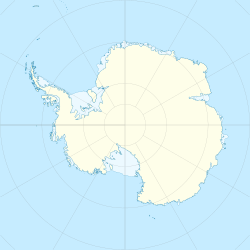Roux Island facts for kids
|
Location in Antarctica
|
|
| Geography | |
|---|---|
| Location | Antarctica |
| Coordinates | 66°54′S 66°57′W / 66.900°S 66.950°W |
| Administration | |
| Administered under the Antarctic Treaty System | |
| Demographics | |
| Population | Uninhabited |
Roux Island is a small, icy piece of land located in the cold, distant region of Antarctica. It's about 2 nautical miles (which is about 3.7 kilometers) long. This island sits near the Arrowsmith Peninsula, close to the entrance of Lallemand Fjord. It's part of the west coast of Graham Land, a large area of the Antarctic Peninsula.
Contents
What is Roux Island?
Roux Island is a remote island in the Antarctic. It measures about 3.7 kilometers (or 2 nautical miles) in length. It is located about 0.9 kilometers (or 0.5 nautical miles) north of the Arrowsmith Peninsula. This island is found on the western side of the entrance to Lallemand Fjord. The fjord is a long, narrow inlet of the sea, surrounded by high cliffs.
Where is Roux Island Located?
Roux Island is off the west coast of Graham Land. Graham Land is the northern part of the Antarctic Peninsula. This peninsula is the largest peninsula in Antarctica. The island is part of a very cold and icy environment. It is completely uninhabited, meaning no people live there permanently.
Discovery of Roux Island
Roux Island was discovered by a group of French explorers. They were part of the French Antarctic Expedition. This expedition took place between 1908 and 1910. The team was led by a famous explorer named Jean-Baptiste Charcot.
Who Named Roux Island?
Charcot's expedition named the island after Jules Charles-Roux. He was a French businessman and politician. He helped support and fund many scientific expeditions. Naming the island after him was a way to honor his contributions.
The French Antarctic Expedition
The French Antarctic Expedition was a scientific journey. Its main goal was to explore and map parts of Antarctica. They used a ship called the Pourquoi Pas? (which means "Why Not?"). During this expedition, they discovered and named many places. These discoveries helped us learn more about the geography of Antarctica.


